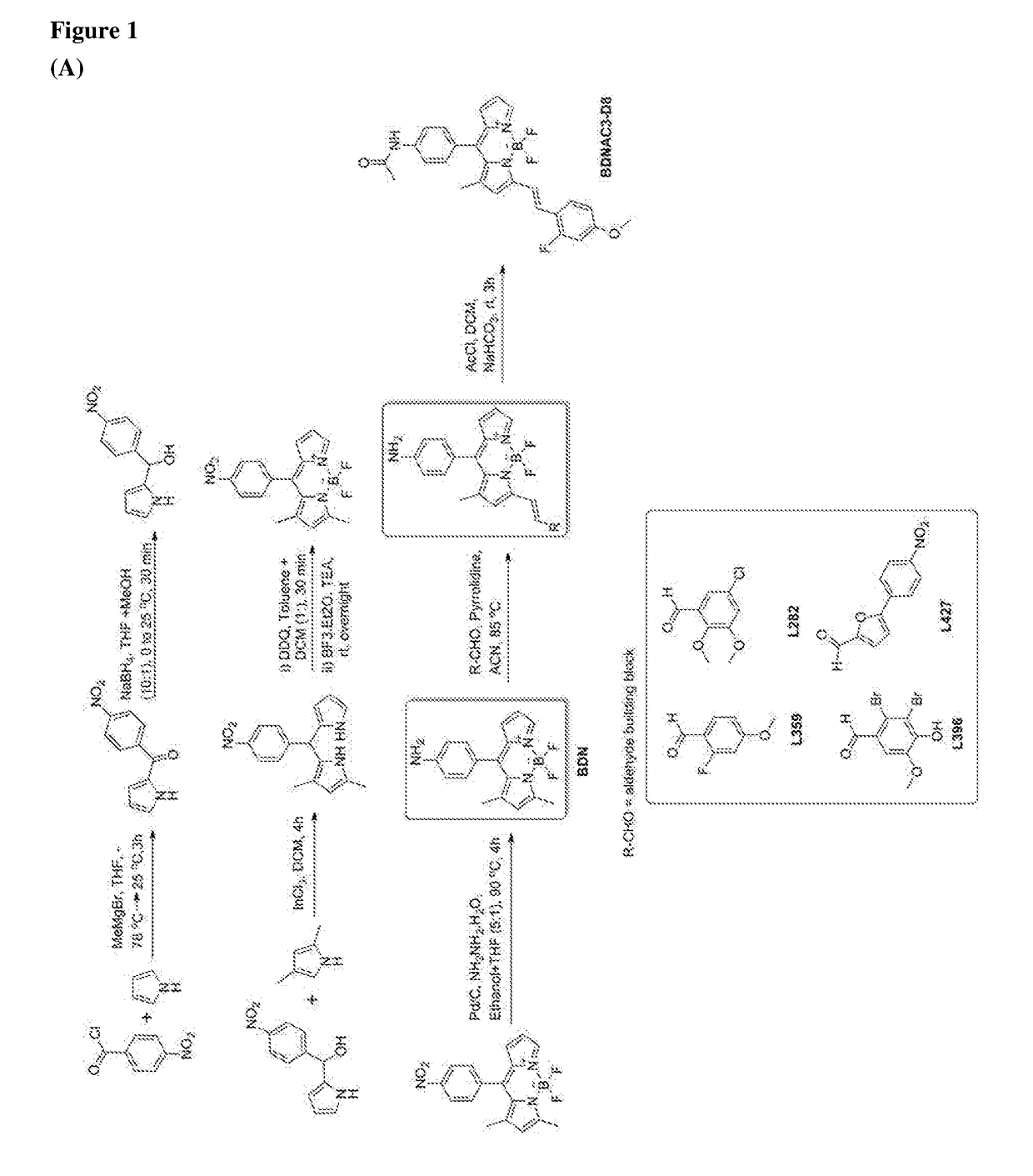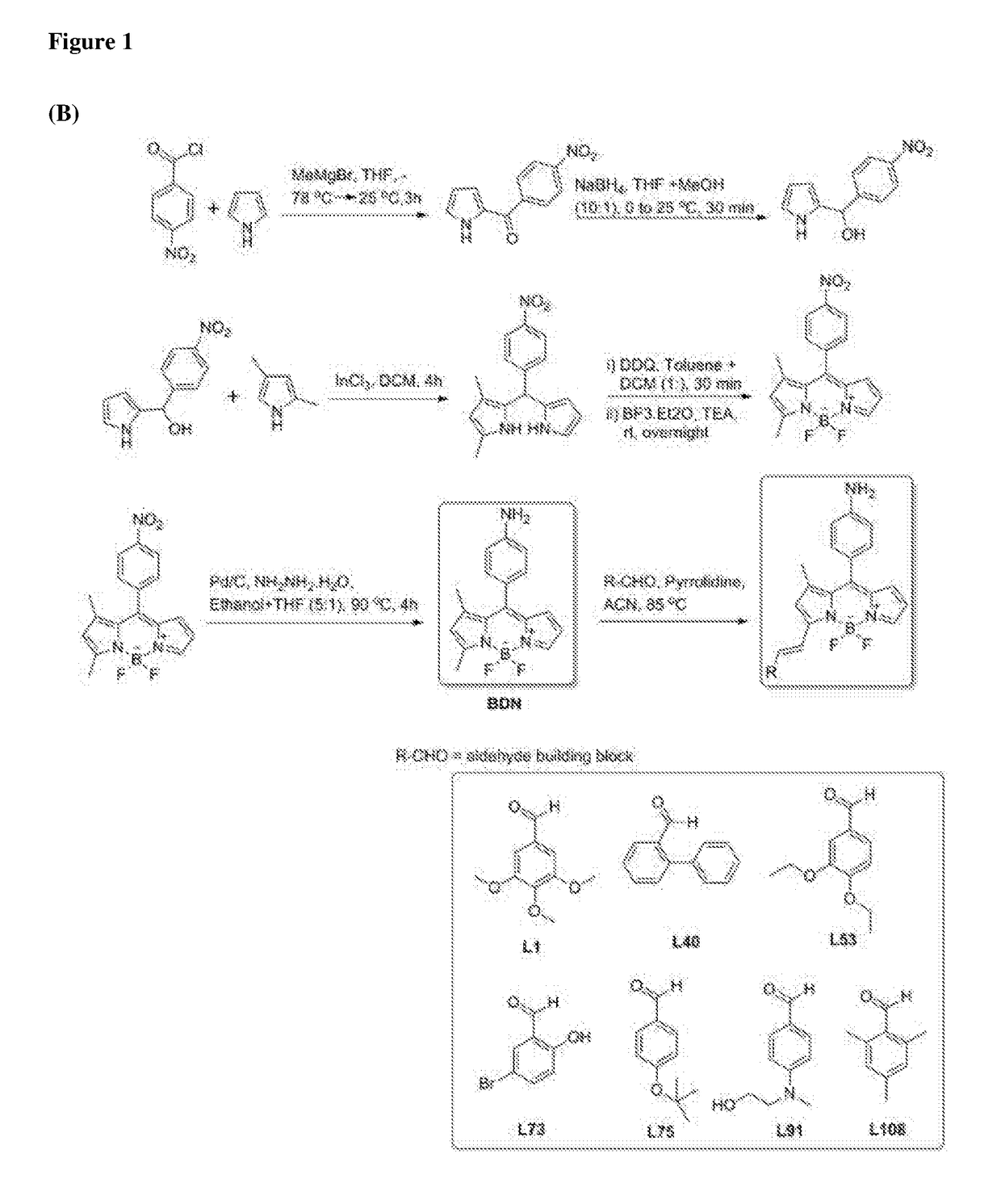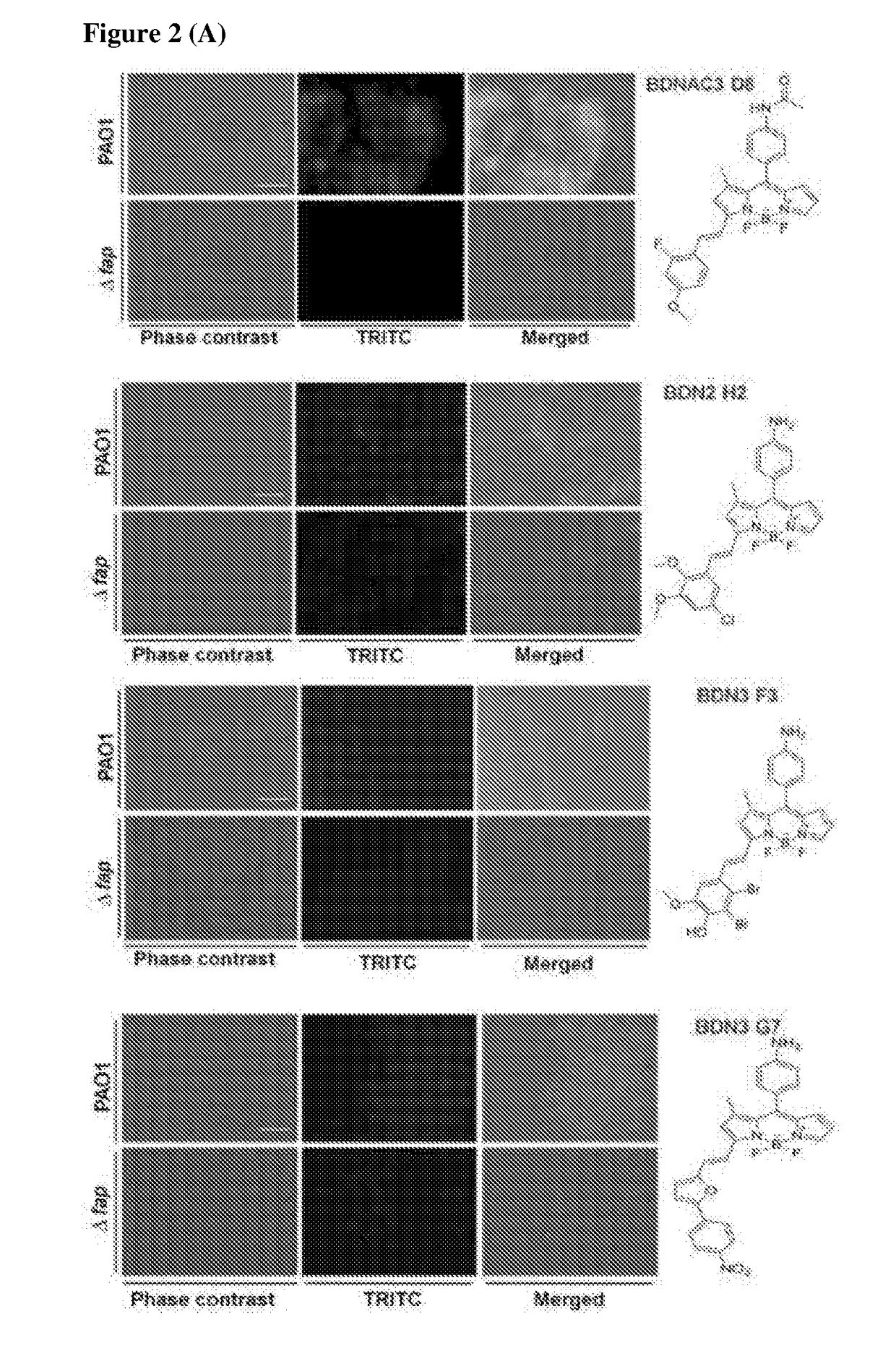Chemical fluorescent probes for detecting biofilms
a biofilm and fluorescent probe technology, applied in the field of biochemistry, can solve the problems of inability to completely eradicate biofilms, inability to detect the presence of biofilms in host organisms with convenient diagnostic tools, and inability to fully understand the formation and composition of biofilms
- Summary
- Abstract
- Description
- Claims
- Application Information
AI Technical Summary
Benefits of technology
Problems solved by technology
Method used
Image
Examples
example 1
Screening for Biofilm Detection Compounds
[0092]All synthesized compounds were screened in two different established biofilm forming conditions. First, compounds were applied for targeting amyloid structures in biofilms. Amyloid is known as key component for initiating biofilm forming after attaching on surfaces. The wild type, PAO1 strain which normally produces biofilm well is used with a negative control, PAO1 Δfap mutant which doesn't synthesize amyloid component due to deletion of the FAP operon. All compounds were screened against biofilms formed by these two strains for identifying hits that only target the PAO1 biofilm. As results, total four compounds were isolated as amyloid targeting compounds (cf. compounds (1) to (4)). The fluorescence signal of the tested compounds can be observed in the TRITC channel of a fluorescence microscope. The fluorescence signals of the compounds tested on the PAO1 strain and the negative control strain (GFP tagged P. aeruginosa PAO1 Δfap mutan...
example 2
Synthesis of Compounds Detecting Amyloid Protein Structures and High Levels of Cyclic-di-GMP in Bacterial Cells of the Biofilm
[0094]The synthesis of the four compounds detecting amyloid protein structures is shown in FIG. 1(A). The synthesis of the seven compounds detecting high levels of cyclic-di-GMP in bacterial cells of the biofilm is shown in FIG. 1(B).
example 3
Surface Plasma Resonance Assay of Four Amyloid Targeting Compounds with Purified Amyloid
[0095]First batch of screening was done under varying amyloid expression conditions for specifically isolating amyloid targeting compounds and four compounds were isolated from cell based screening. All of compounds showed stronger staining patterns in intact biofilms synthesized from PAO1 wild type than PAO1 Δfap which does not produce amyloid by deletion of genes (FIG. 2(A)). Finally, four compounds were examined by surface plasma resonance assay whether those have binding specificity with putative target, namely amyloid. Four hit compounds were examined with thioflavin T and two negative controls on chips after immobilizing purified amyloid. As results, all four compounds isolated from cell based screening were shown to have higher binding intensity (KD value; BDNAC3 D8 (29+2 μM), BDN2 H2 (61±3 μM), BDN3 F3 (16+1 μM) and BDN3 G7 (28+5 μM)) than thioflavin T(85±7 μM) then the two negative contr...
PUM
| Property | Measurement | Unit |
|---|---|---|
| temperature | aaaaa | aaaaa |
| thickness | aaaaa | aaaaa |
| pH | aaaaa | aaaaa |
Abstract
Description
Claims
Application Information
 Login to View More
Login to View More - R&D Engineer
- R&D Manager
- IP Professional
- Industry Leading Data Capabilities
- Powerful AI technology
- Patent DNA Extraction
Browse by: Latest US Patents, China's latest patents, Technical Efficacy Thesaurus, Application Domain, Technology Topic, Popular Technical Reports.
© 2024 PatSnap. All rights reserved.Legal|Privacy policy|Modern Slavery Act Transparency Statement|Sitemap|About US| Contact US: help@patsnap.com










